Ease Into The Catch
Bob Kaehler
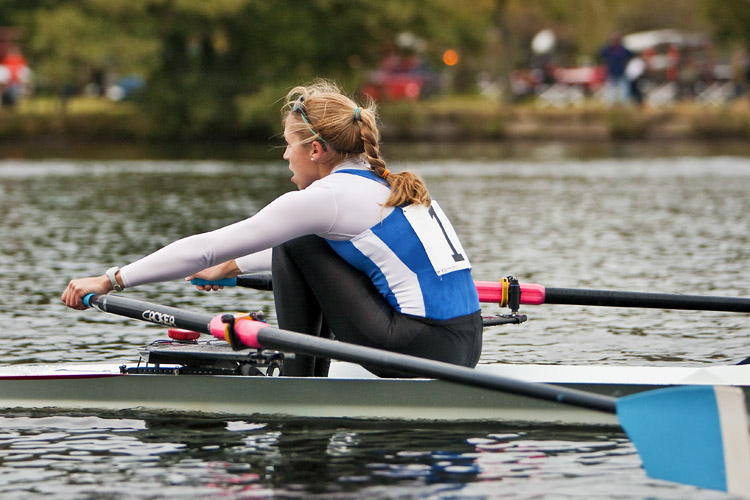
Whether you are 5’6” (167cm) or 6’4” (193cm), good reach at the catch is important. Proper hip flexibility and/or strength are essential to make this happen. When athletes do not have proper hip flexibility at the catch, quick solutions include either lowering the feet or sitting on a butt pad. A more effective and long-term approach is to identify your hip flexibility, and if necessary, improve it.
Lowering the feet and sitting on a butt pad are two common methods used to improving reach and ease of getting into the catch. However, both of these methods increase the vertical component of your rowing stroke and make your boat less stable. While these issues may not interest the recreational rower, they could result in loss of power and speed to the racer.
Changing foot positions is easy and relatively inconsequential on an erg. In boats, however, particularly the smaller boats (1X, 2X, 2-), it is difficult to adequately lower the feet because of the hull. In which case, a butt pad may be used. Rowers who lack ideal hip mobility can also increase their reach by bringing the shoulders deeper into the catch. This is done by increasing flexion (C-shape) in mid (thoracic spine) and low-back (lumbar spine). However, increasing the distance of the shoulders past the hips at the catch is not an ideal solution, as it increases stress on the passive tissues in the back (vertebrae, discs, and ribs). This additional stress can lead to back pain and/or rib fractures.
The ideal solution to improving reach at the catch is to improve hip flexibility. This will help not only eliminate the use of equipment and compromised technique, but also reduce the risk of injuries. To assess hip range of motion (ROM) at the catch, get on all fours with your feet (shoes off) placed over the edge of a staircase landing. This can also be done using a treatment table. Once you have your thighs and arms in a vertical starting position (Fig. 1), begin rocking backwards without moving your hand position. Push yourself back slightly with your hands, and then push back as far as you can (Fig. 2). Full range of motion for this test occurs when the ischial tubercles or sits bones (YELLOW MARKER) are able to touch both heels. If you are not able to reach this point, then you have limited hip flexion joint mobility, possibly caused by muscle inflexibility and/or loss of joint mobility.
Some athletes will find that they have better ROM on one side when compared to the other. Athletes with total hip replacements should consult with their surgeons before attempting to push to full ROM. This testing method can also be used as a corrective stretching exercise for those unable to achieve full range of motion with this test.
Another way to improve the same ROM is to do an assisted squat (Fig. 3). Grab onto a solid object or door frame, and drop down into the deepest squat position you can maintain. Place your feet about foot stretcher distance apart (Fig. 4). Make sure that you do not feel any knee or hip joint pain with these stretches. If you do, consult your physician before attempting to do this again.
Hip immobility is one of many imbalances that can prevent rowers from achieving an ideal, powerful stroke. Identifying and correcting these imbalances can reduce compensations elsewhere in the body (ie. increased low and mid-back flexion), and the need to adjust or use additional equipment. Most important, however, improved Body Balance will help athletes reduce their risk of injury and improve the overall effectiveness and enjoyment of their rowing.
Please contact Coach Kaehler with any questions or comments
VIDEO LINK OF THE MOVEMENTS IN THE FIGURES
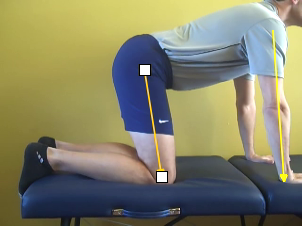 Figure 1 | 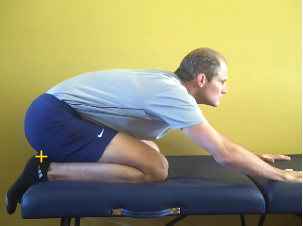 Figure 2 |
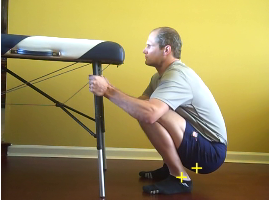 Figure 3 | 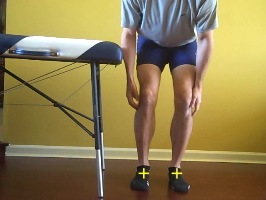 Figure 4 |
If you enjoy and rely on row2k, we need your help to be able to keep doing all this. Though row2k sometimes looks like a big, outside-funded operation, it mainly runs on enthusiasm and grit. Help us keep it coming, thank you! Learn more.
Comments | Log in to comment |
- Bont Rowing
- Calm Waters Rowing
- Concept 2
- Craftsbury Sculling
- The Crew Classic
- CrewLAB
- Croker
- Durham Boat Co.
- Empacher
- Faster Masters
- Filippi
- Fluidesign
- h2row.net
- HUDSON
- Live2Row Studios
- Nielsen-Kellerman
- Oak Ridge RA
- Peinert Boat Works
- Pocock Racing Shells
- Race1 USA
- RowKraft
- Rubini Jewelers
- Vespoli USA
- WinTech Racing
- Bont Rowing
- Calm Waters Rowing
- Concept 2
- Craftsbury Sculling
- The Crew Classic
- CrewLAB
- Croker
- Durham Boat Co.
- Empacher
- Faster Masters
- Filippi
- Fluidesign
- h2row.net
- HUDSON
- Live2Row Studios
- Nielsen-Kellerman
- Oak Ridge RA
- Peinert Boat Works
- Pocock Racing Shells
- Race1 USA
- RowKraft
- Rubini Jewelers
- Vespoli USA
- WinTech Racing


















02/24/2011 7:19:05 AM
Train Smart and Be Balanced. Coach Kaehler
02/07/2011 4:52:10 AM